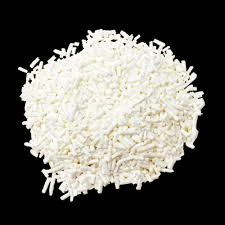
Understanding the Impact of Food Additive 471 on Health and Safety
The Role of Food Additives Understanding 471 in the Food Industry
Food additives play a crucial role in the modern food industry, enhancing the flavor, appearance, and shelf life of countless products we consume daily. Among various food additives, E471, also known as mono- and diglycerides of fatty acids, stands out as a widely used emulsifier. This article explores the significance of E471, its sources, functions, and safety considerations.
What is E471?
E471 is a food additive that consists of mono- and diglycerides derived from glycerol and fatty acids. It is primarily used as an emulsifier, which means it helps to blend ingredients that typically do not mix, such as oil and water. Emulsifiers are essential in food processing, as they create stable mixtures and improve texture. E471 is commonly found in a wide range of products, including baked goods, margarine, ice cream, and confectionery.
Sources of E471
E471 can be derived from both animal and vegetable sources. Most commercially available E471 is sourced from plant-based fats, such as palm oil, soybean oil, and canola oil. However, it can also come from animal fats. This poses a consideration for those following vegetarian or vegan diets, as the source of the emulsifier may not always be clear. Therefore, consumers with dietary restrictions should read labels carefully or seek clarification from manufacturers regarding the source of E471.
Functions of E471
471 food additive

The primary function of E471 is to act as an emulsifier. By reducing the surface tension between oil and water, it helps create a smoother, more stable product. In baked goods, E471 contributes to improved texture, moisture retention, and shelf life. In ice cream, it aids in creating a creamy consistency and prevents the formation of ice crystals, enhancing the overall mouthfeel. Additionally, E471 can serve as a stabilizer, thickener, and dispersing agent, making it versatile across various food applications.
Safety and Regulations
E471 is considered safe for consumption by food safety authorities, including the European Food Safety Authority (EFSA) and the U.S. Food and Drug Administration (FDA). These organizations have established acceptable daily intake levels and guidelines for food additives, ensuring that consumers are protected. However, like any food additive, moderation is key. Excessive consumption of emulsifiers can lead to adverse health effects, including potential digestive issues.
Recent research has raised questions about the long-term impact of certain food additives on health. Some studies suggest that emulsifiers may affect gut microbiota, leading to inflammation and other health concerns. Although these findings warrant further investigation, consumers should remain informed and make conscious dietary choices.
Conclusion
In conclusion, E471, as a widely used food additive, plays a vital role in the food industry by enhancing the texture, stability, and shelf life of many products. Derived from both animal and vegetable sources, it serves as an essential emulsifier in countless items we enjoy daily. While regulatory bodies deem E471 safe for consumption, it is wise for consumers to be aware of their dietary needs and preferences, especially regarding the source of such additives. By reading food labels and understanding the role of additives like E471, consumers can make informed choices that align with their health and dietary goals.
-
Pure Sodium Dichloroisocyanurate Dihydrate | Powerful DisinfectantNewsAug.29,2025
-
Industrial Chemicals: Quality & Purity for Every IndustryNewsAug.28,2025
-
Nitrile Rubber Honoring Strict Production StandardsNewsAug.22,2025
-
Aspartame Ingredients Honoring Food Safety ValuesNewsAug.22,2025
-
Fertilizer for Balanced Plant NutritionNewsAug.22,2025
-
Cyanide Gold Processing with High Purity AdditivesNewsAug.22,2025
-
Formic Acid in Textile Dyeing ApplicationsNewsAug.22,2025
Hebei Tenger Chemical Technology Co., Ltd. focuses on the chemical industry and is committed to the export service of chemical raw materials.
-

view more DiethanolisopropanolamineIn the ever-growing field of chemical solutions, diethanolisopropanolamine (DEIPA) stands out as a versatile and important compound. Due to its unique chemical structure and properties, DEIPA is of interest to various industries including construction, personal care, and agriculture. -

view more TriisopropanolamineTriisopropanolamine (TIPA) alkanol amine substance, is a kind of alcohol amine compound with amino and alcohol hydroxyl, and because of its molecules contains both amino and hydroxyl. -

view more Tetramethyl Thiuram DisulfideTetramethyl thiuram disulfide, also known as TMTD, is a white to light-yellow powder with a distinct sulfur-like odor. It is soluble in organic solvents such as benzene, acetone, and ethyl acetate, making it highly versatile for use in different formulations. TMTD is known for its excellent vulcanization acceleration properties, which makes it a key ingredient in the production of rubber products. Additionally, it acts as an effective fungicide and bactericide, making it valuable in agricultural applications. Its high purity and stability ensure consistent performance, making it a preferred choice for manufacturers across various industries.





